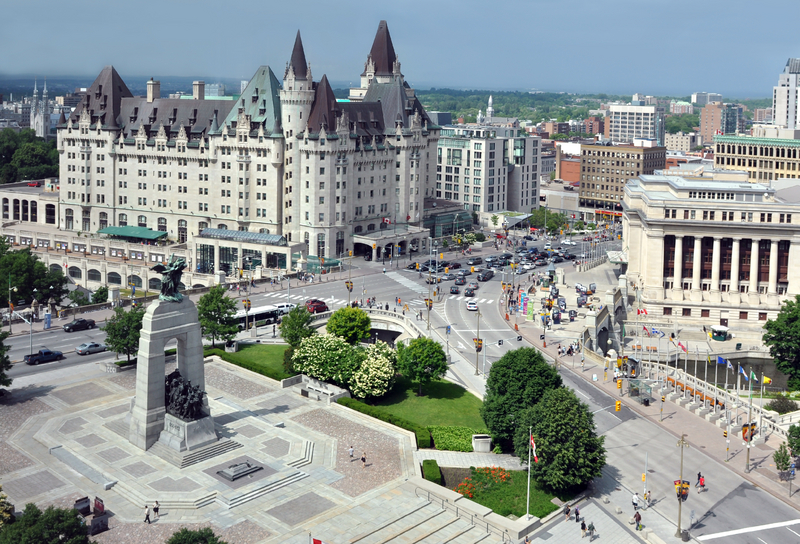The capital city of Canada and the fourth largest metropolitan area in the country, Ottawa is a city with both modern and historical importance. Along with the suburb of Gatineau, Ottawa lies within the National Capital Region, much like Washington D.C. has a government district separate from Virginia and Maryland. Ottawa is dominated by federal government but also has a diversified economy that includes education and high tech development.
The first inhabitants of the region were members of the Algonquin tribe. European explorers seeking passages to the Pacific Ocean used the St. Lawrence River and its tributaries for travel. In 1800 a settlement was formed by former New England residents looking for suitable farming land. Eventually a lumber mill was begun and the Ottawa River transported logs downstream to the established communities. In 1857 Queen Victoria chose Ottawa as the capital city for what was then the Province of Canada. This decision was based largely on the fact that the city was relatively secluded and therefore more easily defended in case of military action.
 Today Ottawa is a modern city with an ongoing economic and building boom. The city has its own separate government from the federal administration, which is housed in a number of historical buildings on Parliament Hill. The city is known for its unusual amount of green space and wide avenues as well as immaculately maintained parks.
Today Ottawa is a modern city with an ongoing economic and building boom. The city has its own separate government from the federal administration, which is housed in a number of historical buildings on Parliament Hill. The city is known for its unusual amount of green space and wide avenues as well as immaculately maintained parks.
Ottawa has a humid temperate climate with warm summers and somewhat cold winters. Rainfall accumulation averages 940mm or 37 inches and the record high and low temperatures are 38 degrees Celsius (100 degrees Fahrenheit) and -38 degrees Celsius (-39 degrees Fahrenheit). The humid weather is felt most strongly near the riverbanks and dry periods of more than two weeks are rare even during the summer.
Public transportation is used by a great percentage of residents and visitors within the metro area. The bus service includes both rapid transit service and inner city routes and the light rail O-Train has been extended into the suburbs. An intricate design of bicycle and pedestrian pathways forms a web throughout the city and surrounding communities.
Visitors to Ottawa are drawn to the many historical museums and landmarks in the area. Of major interest is the National Gallery of Canada, the Canada Aviation and Space Museum, the Canadian War Museum and the National Arts Centre that is home to the Ottawa Symphony Orchestra and Opera Lyra Ottawa.
Sports in the region include the Ottawa Senators of the National Hockey League and the many semipro teams of the Intercounty Baseball League. Ottawa hosts a number of regional, national and international sporting events including soccer, equestrian competition and junior hockey.
The population of Ottawa is quite diverse and has been steadily increasing in the past few decades. In 2010 estimates of the city and metro area population is in excess of 1.1 million, and the demographic makeup includes residents of Chinese, French, German, Arabic and Persian ancestry. Ottawa is the largest bilingual city in Canada, with roughly half the population able to speak both English and French.





